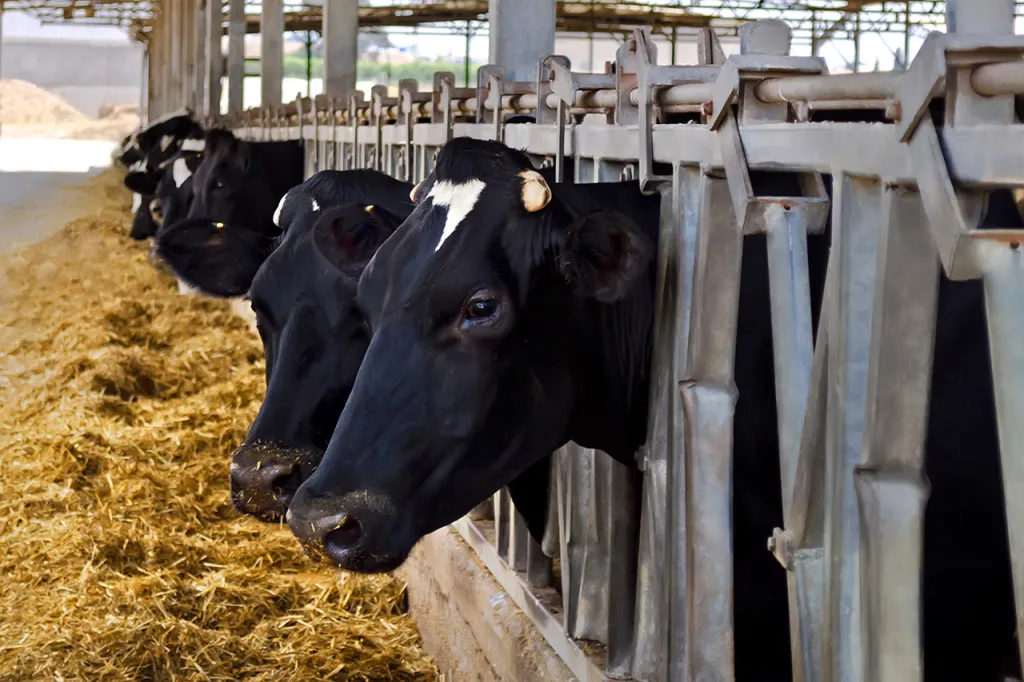Georgia’s dairy industry is as diverse as it is dynamic. From small family farms to large-scale operations, the state has long embraced dairy cattle farming as a vital part of its agricultural landscape. Whether you are a seasoned dairy farmer or a newcomer eager to explore the field, understanding the various dairy cattle breeds and their unique advantages is key to producing high-quality milk. In this article, we will explore the most popular dairy cattle breeds in Georgia, delving into the standout features that make them excellent choices for local farmers.
In particular, we will spotlight the breed that has become a favorite for its impressive milk production and adaptability, while also introducing you to the top 5 breeds that are widely embraced in the Peach State. Along the way, we will discuss important factors such as breed characteristics, selection criteria, and the role of modern technology in dairy farming. This comprehensive guide is designed to provide you with actionable insights that can help you decide which breed best suits your operation—without any references to competitor businesses.
At Georgia Guider, we are committed to empowering local farmers with reliable, in-depth information about agricultural trends and best practices. By the end of this article, you will have a clear understanding of what makes a dairy cattle breed popular in Georgia, and how selecting the right breed can significantly impact your farm’s productivity and profitability.
The Dairy Landscape in Georgia
Georgia’s dairy industry has evolved significantly over the decades. Historically, dairy farming was a modest venture, often integrated with mixed agriculture practices on family-owned farms. However, with advances in technology, improvements in animal husbandry, and growing market demand for high-quality milk, dairy farming in Georgia has become a specialized and competitive enterprise.
Historical Evolution
Georgia’s favorable climate, ample pastureland, and dedicated farming communities have long supported a robust agricultural sector. Dairy farming, in particular, benefited from innovations in milking technology and animal nutrition, leading to increased yields and improved herd health. Over time, these advances spurred the growth of specialized dairy operations that focused on maximizing milk quality and quantity. Today, many dairy farmers in Georgia combine traditional practices with modern techniques to produce milk that meets the highest standards of quality.
Current Trends and Influences
Several factors shape the current dairy landscape in Georgia:
- Technological Advancements: Innovations in automated milking systems, herd management software, and animal health monitoring have streamlined dairy operations, allowing farmers to focus more on quality and efficiency.
- Market Demand: Consumer preferences have shifted toward high-quality, nutrient-rich milk. This has placed pressure on farmers to adopt breeds known for superior milk production and consistency.
- Sustainable Farming Practices: Environmental concerns and the push for sustainability have encouraged many farms to adopt eco-friendly practices. These include using renewable energy sources, reducing waste, and selecting breeds that perform well under sustainable management practices.
- Local Adaptation: The region’s unique climate and soil conditions mean that certain dairy cattle breeds naturally excel in Georgia. Adaptability to heat, humidity, and local feed resources are critical factors influencing breed popularity.
Georgia’s dairy industry is not just about numbers—it’s a vibrant community where tradition meets innovation. The evolution of dairy farming practices in the state has paved the way for selecting breeds that not only produce high-quality milk but also thrive in the local environment.
Understanding Dairy Cattle Breeds
When choosing a dairy cattle breed, several critical factors come into play. Farmers need to consider not only the volume of milk produced but also the quality of that milk, the animal’s adaptability to local conditions, and its overall management needs.
Key Breed Characteristics
- Milk Yield: One of the most important criteria is the volume of milk a breed produces. Higher yields mean greater profitability, especially when market demand for milk is strong.
- Milk Quality: Beyond quantity, the composition of the milk—its fat, protein content, and overall nutritional profile—is crucial. High-quality milk can command better prices and meet the stringent standards of processing facilities.
- Temperament: A calm, manageable temperament can significantly ease day-to-day farm operations, making handling and milking less stressful for both the animals and the farmers.
- Adaptability: Georgia’s climate can be challenging. Breeds that thrive in warmer, humid conditions without compromising productivity are highly prized.
- Health and Longevity: Robust health and longevity reduce the need for frequent replacements, ultimately lowering overall production costs.
Selection Criteria for Dairy Farmers
Choosing the right breed is not simply a matter of comparing milk yields. Farmers must evaluate a combination of factors:
- Local Environment: How well does the breed adapt to Georgia’s climate and available forage?
- Farm Scale: Smaller farms might benefit from breeds that are easier to manage, while larger operations might opt for high-yield breeds that require more sophisticated infrastructure.
- Economic Considerations: Investment in a particular breed should align with the farm’s long-term economic goals. The cost of purchasing and maintaining a herd is weighed against the expected returns from milk production.
- Technological Integration: Modern dairy farms increasingly rely on technology for monitoring animal health and optimizing production. Breeds that integrate well with these systems may offer an advantage.
By understanding these criteria, dairy farmers can make informed decisions that balance productivity, cost, and sustainability—ultimately driving success on the farm.
Spotlight on the Most Popular Dairy Cattle Breed in Georgia
Among the various breeds available, one has emerged as the clear favorite in Georgia: the Holstein. Renowned worldwide for its exceptional milk production and adaptability, the Holstein stands out as the most popular dairy cattle breed in the region.
Why the Holstein?
Holsteins have earned their reputation through decades of proven performance. Here’s why this breed is so highly regarded among Georgia dairy farmers:
- Exceptional Milk Yield: Holsteins are widely recognized for their high milk production. Their ability to produce large volumes of milk, coupled with a favorable fat and protein composition, makes them a top choice for dairy operations focused on maximizing output.
- Adaptability: Despite their origins in cooler climates, modern Holsteins have adapted well to Georgia’s warmer, humid conditions. Advances in genetic selection and nutrition management have allowed these cows to thrive even in challenging environments.
- Strong Genetic Foundation: Over the years, selective breeding has honed the Holstein’s traits to ensure both productivity and longevity. This focus on genetic improvement means that Holsteins continue to evolve, meeting the ever-changing demands of the dairy industry.
- Management and Care: While no breed is without its challenges, the extensive body of knowledge surrounding Holstein care means that farmers have access to a wealth of resources and best practices for optimal herd management.
Benefits and Features
For dairy farmers in Georgia, the advantages of choosing Holsteins are clear:
- High Efficiency: With their impressive milk output, Holsteins often deliver a high return on investment. This efficiency is particularly important in a competitive market where quality and quantity both play crucial roles.
- Market Demand: The milk produced by Holsteins is highly sought after by processors due to its balanced composition, making it a reliable source for both liquid milk and dairy products.
- Robustness: When managed correctly, Holsteins exhibit strong health and a steady production curve throughout their productive years, reducing the frequency of herd replacement and associated costs.
While no single breed is perfect for every operation, the Holstein’s combination of high milk yield, adaptability, and strong genetic performance cements its status as the most popular dairy cattle breed in Georgia.
Top 5 Dairy Cattle Breeds in Georgia
In addition to the standout Holstein, there are several other dairy cattle breeds that play a significant role in Georgia’s dairy sector. Here, we profile the top 5 breeds of dairy cattle that have captured the attention of local farmers.
1. Holstein
Overview:
Holsteins are the undisputed leaders in dairy production. Known for their distinctive black-and-white markings, these cattle have long been the backbone of the dairy industry.
Key Features:
- High Milk Production: Consistently produces large volumes of milk.
- Efficient Conversion: Excellent feed-to-milk conversion ratio.
- Wide Genetic Base: Extensive breeding programs have optimized their performance.
Pros:
- Superior milk yield.
- Extensive support and research data available.
- Adaptability to modern dairy farming practices.
Cons:
- Higher management and nutritional requirements.
- May be more sensitive to extreme heat without proper care.
2. Jersey
Overview:
Jerseys are smaller in stature compared to Holsteins but are renowned for the rich quality of their milk, which boasts a higher butterfat and protein content.
Key Features:
- Rich Milk Quality: Ideal for cheese, butter, and other dairy products.
- Compact Size: Easier to manage, particularly on smaller farms.
- Efficient Feed Utilization: Excellent conversion of feed into high-quality milk.
Pros:
- Produces premium-quality milk with high nutritional content.
- Lower feed requirements due to their smaller size.
- Generally easier to handle due to their docile temperament.
Cons:
- Lower overall milk volume compared to larger breeds.
- May require specialized care to maintain optimal production.
3. Brown Swiss
Overview:
Brown Swiss cattle are valued for their strong build and endurance. They are well-regarded for both milk production and longevity, making them a versatile choice for dairy operations.
Key Features:
- Balanced Milk Production: Provides a good balance between quantity and quality.
- Longevity: Known for a longer productive lifespan.
- Robust Health: Adaptable to various environmental conditions.
Pros:
- Durable and resilient breed.
- Consistent performance over a longer period.
- Ideal for farms seeking a balance between high yield and milk quality.
Cons:
- Moderate milk production compared to Holsteins.
- May require specific management practices to optimize performance.
4. Guernsey
Overview:
Guernseys are recognized for their rich, golden-hued milk, which is naturally high in beta-carotene and other nutrients. This breed has a loyal following among farmers focused on premium dairy products.
Key Features:
- Nutrient-Rich Milk: Milk naturally contains higher levels of beta-carotene, giving it a distinctive golden color.
- Gentle Disposition: Known for their calm nature, making them easy to manage.
- Adaptability: Capable of thriving in varied conditions with proper care.
Pros:
- Superior milk quality that appeals to niche markets.
- Efficient in terms of feed conversion.
- Ideal for farmers targeting specialty dairy products.
Cons:
- Lower milk volume compared to some of the larger breeds.
- Less common in some regions, which may affect local availability of genetics and support.
5. Ayrshire
Overview:
Ayrshires, originating from Scotland, have earned a reputation for their reliability and balanced performance. They produce milk that is not only abundant but also of consistently high quality.
Key Features:
- Consistency: Provides stable milk production year after year.
- Robust Health: Known for their hardiness and ability to adapt to various climates.
- Balanced Production: Offers a blend of good milk volume and quality.
Pros:
- Reliable performance across diverse conditions.
- Well-suited for both small-scale and larger operations.
- Resilient to local environmental challenges when managed properly.
Cons:
- Milk yield can be variable depending on specific herd management.
- May not reach the high volume outputs of Holsteins under certain conditions.
Comparative Snapshot
| Breed | Milk Yield | Milk Quality | Adaptability | Management Needs |
|---|---|---|---|---|
| Holstein | Very High | High Volume, Balanced | High | High |
| Jersey | Moderate | Rich, High Fat Content | High | Low |
| Brown Swiss | Moderate to High | Balanced | Very High | Moderate |
| Guernsey | Moderate | Nutrient-Rich | Moderate | Moderate |
| Ayrshire | Moderate to High | Consistent & Reliable | High | Moderate |
Each breed has its unique strengths, and the right choice depends on your farm’s specific conditions, management style, and market goals. The profiles above are designed to help you weigh the pros and cons of each breed, ensuring you make an informed decision tailored to your operation.
Choosing the Right Breed for Your Farm
Selecting the ideal dairy cattle breed is a decision that goes far beyond simply chasing the highest milk yield. It requires a thoughtful assessment of your farm’s unique needs, the local climate, available resources, and long-term business goals.
Decision Factors
- Farm Size and Infrastructure:
- Small-Scale Operations: Smaller farms may benefit from breeds like Jerseys or Guernseys, which are easier to manage and require less feed per animal.
- Large-Scale Farms: For larger operations, high-yield breeds like Holsteins might offer the economies of scale needed to maximize output.
- Climate and Environment:
- Heat Tolerance: Given Georgia’s warm, humid climate, selecting breeds that are known to adapt well to these conditions is crucial. Breeds with robust health and proven adaptability can reduce the challenges posed by heat stress.
- Local Forage: Consider the type of feed available in your region. Some breeds convert local forages more efficiently, reducing the need for supplementary feeds.
- Economic Considerations:
- Initial Investment vs. Long-Term Gains: Some breeds may require a higher initial investment, but their long-term production efficiencies can lead to greater profitability.
- Operational Costs: Evaluate the overall costs, including feed, healthcare, and management practices, associated with each breed.
- Market Demands:
- Milk Quality Preferences: If your target market favors premium dairy products, breeds that produce nutrient-rich milk—such as Jerseys or Guernseys—might be more attractive.
- Diversification: Some farms diversify by raising more than one breed to capture both high volume and high-quality segments of the market.
Long-Term Considerations
- Sustainability:
Investing in breeds that are resilient to local environmental challenges and compatible with sustainable farming practices can yield long-term benefits. This not only improves herd health but also aligns with the growing consumer demand for eco-friendly agricultural practices. - Genetic Improvement and Adaptation:
Modern dairy farming is heavily influenced by advancements in genetic selection. Breeds that continuously evolve through selective breeding programs tend to offer improved performance over generations. Staying updated with the latest research and technology can help you optimize your herd’s productivity. - Management Practices:
The success of any dairy operation depends on robust herd management practices. It is essential to align your breed choice with your available resources, expertise, and technological capabilities. Regular training and updated management strategies can enhance overall productivity and ensure that the chosen breed reaches its full potential.
By carefully considering these factors, you can choose a dairy cattle breed that not only meets your immediate production needs but also supports the long-term vision and profitability of your farm.
Trends and Future Outlook in Georgia Dairy Farming
The dairy farming landscape is constantly evolving, driven by technological innovations, shifting market dynamics, and a growing emphasis on sustainability. In Georgia, these trends are influencing breed selection and overall farm management practices in significant ways.
Technological Innovations
Modern dairy farms are increasingly adopting advanced technologies that help optimize herd management. Automated milking systems, real-time health monitoring, and precision feeding technologies are just a few examples of innovations that have transformed dairy operations. These technologies allow farmers to track animal performance more accurately and adjust management practices to improve both yield and milk quality. For instance, the integration of herd management software has made it easier to identify high-performing breeds and adjust breeding strategies accordingly.
Evolving Market Demands
Consumer preferences are playing a crucial role in shaping the future of dairy farming. There is a growing demand for milk that is not only produced in high volumes but also meets specific nutritional standards. Organic, hormone-free, and sustainably produced milk products are gaining traction. This shift encourages farmers to choose dairy cattle breeds that excel in producing nutrient-rich, high-quality milk. Additionally, niche markets that prioritize specialty dairy products have led to renewed interest in breeds like Guernsey and Jersey, which are known for their distinctive milk composition.
Sustainability and Environmental Considerations
Sustainability is more than a buzzword—it is an essential component of modern dairy farming. Georgia’s farmers are increasingly focused on reducing their environmental footprint through practices such as improved waste management, energy-efficient operations, and the careful selection of cattle breeds that thrive under sustainable practices. Breeds that are resilient and require fewer external inputs (such as specialized feed or extensive veterinary care) are particularly appealing in this context.
The Future of Breed Selection
As research in genetics and animal nutrition advances, dairy farmers in Georgia are better equipped than ever to make informed decisions about breed selection. Ongoing studies continue to refine our understanding of how different breeds perform under various conditions, leading to improved breeding programs that focus on both productivity and animal welfare. This data-driven approach ensures that the top 5 dairy cattle breeds highlighted in this article remain competitive and relevant in the years to come.
Conclusion
Georgia’s dairy industry is characterized by its rich history, evolving practices, and the diverse range of cattle breeds that drive its success. Whether you are drawn to the high-yield performance of the Holstein, the premium milk quality of the Jersey, or one of the other top breeds such as Brown Swiss, Guernsey, or Ayrshire, the decision ultimately comes down to aligning your farm’s unique needs with the strengths of each breed.
In this comprehensive guide, we have explored:
- The evolution and current landscape of dairy farming in Georgia.
- Key characteristics and selection criteria for dairy cattle breeds.
- An in-depth look at the Holstein—the most popular dairy cattle breed in Georgia.
- Detailed profiles of the top 5 dairy cattle breeds, complete with pros, cons, and comparative insights.
- Practical tips for choosing the right breed based on farm size, climate, and long-term economic goals.
- Emerging trends and future outlooks in dairy farming that promise to shape the industry for years to come.
Armed with this information, you can make an informed decision that not only boosts milk production but also enhances the overall sustainability and profitability of your dairy operation. As you navigate the challenges and opportunities that lie ahead, remember that the right breed can be the cornerstone of a thriving, future-proof dairy business.
For more insights, best practices, and updates on Georgia’s dynamic agricultural landscape, visit Georgia Guider. Our goal is to provide you with the resources and expert guidance needed to succeed in today’s competitive dairy market—ensuring that your farm remains both productive and profitable.
By embracing the strengths of Georgia’s top dairy cattle breeds and integrating modern technology with sustainable practices, you can create a resilient operation that meets the demands of both today’s consumers and tomorrow’s challenges. Happy farming!










